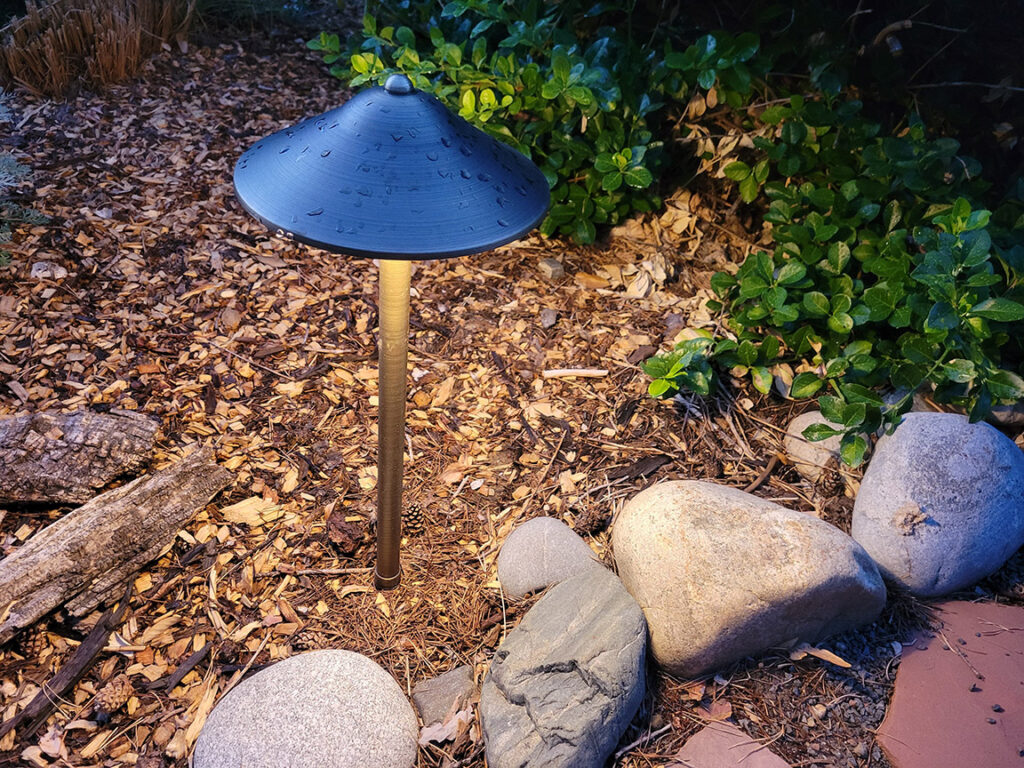
Low voltage landscape lighting is a great way to add evening functionality to your home landscape, as well as highlight and enhance some of those landscape elements at night. But it’s also important to consider whether these light fixtures may be adding to the growing light pollution problem that is impacting our world more and more each day, or to be more exact, impacting each night.
What exactly is light pollution and why is it a problem? The International Dark-Sky Association defines it as: “The inappropriate or excessive use of artificial light – known as light pollution – can have serious environmental consequences for humans, wildlife, and our climate.” Light pollution keeps us from having the ability to view the stunning vistas of the night sky that have delighted and inspired our ancestors for millennia prior to the advent of artificial lights. But its not just stargazing that is compromised by nighttime light pollution. Artificial lights can harm wildlife such as insects, migratory birds, turtles and mammals, by disorienting them, distracting them so they are more easily preyed upon, or even disrupting migrations leading to exhaustion or starvation.
Light pollution has grown so much over the recent decades that researchers have concluded that “more than 80% of the world and more than 99% of the U.S. and European populations live under light-polluted skies. The Milky Way is hidden from more than one-third of humanity, including 60% of Europeans and nearly 80% of North Americans. Moreover, 23% of the world’s land surfaces between 75°N and 60°S, 88% of Europe, and almost half of the United States experience light-polluted nights.” (https://www.science.org/doi/10.1126/sciadv.1600377#T1)
The International Dark-Sky Association lists the components of light pollution as:
Glare – excessive brightness that causes visual discomfort
Skyglow – brightening of the night sky over inhabited areas
Light trespass – light falling where it is not intended or needed
Clutter – bright, confusing and excessive groupings of light sources
The IDA has a list of 5 rules to consider when planning for landscape lighting:
1. Useful
Use light only if it is needed
All light should have a clear purpose. Consider how the use of light will impact the area, including wildlife and their habitats.
Consider using reflective paints or self-luminous markers for signs, curbs, and steps to reduce the need for permanently installed outdoor lighting.
2. Targeted
Direct light so it falls only where it is needed
Use shielding and careful aiming to target the direction of the light beam so that it points downward and does not spill beyond where it is needed.
3. Low level
Light should be no brighter than necessary
Use the lowest light level required. Be mindful of surface conditions, as some surfaces may reflect more light into the night sky than intended.
4. Controlled
Use light only when it is needed
Use controls such as timers or motion detectors to ensure that light is available when it is needed, dimmed when possible, and turned off when not needed.
5. Warm-colored
Use warmer-color lights where possible.
Limit the amount of shorter wavelength (blue-violet) light to the least amount needed.
And the International Dark-Sky Association has this summary that is a good mantra to consider if you want to keep your outdoor lighting from causing unnecessary light pollution: “Light where you need it, when you need it, in the amount needed, and no more.”
Our landscape lighting plans don’t have to make the light pollution crisis much worse than it already is. We can use landscape light judiciously around our properties. We can use fewer up-lights and more down-lights. We can keep the light level low and the light color warm. And we can use timing devices to turn off the brighter landscape lights when the pool party or garden fete is over, the guests have gone home, and we’ve gone inside for the night.
This is the official blog of Outdoor Design Group, Colorado Landscape Architects. For more information about our business and our services, click here.